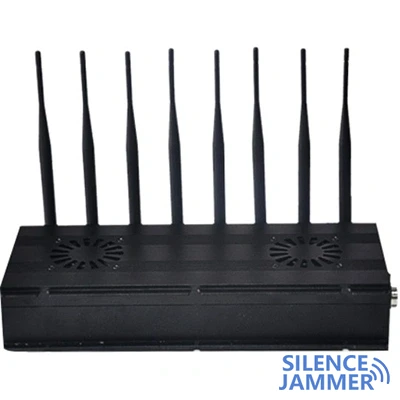5G technology, as the fifth generation of mobile communication technology, brings faster speed, lower latency and greater connection capacity. However, with the widespread deployment of 5G, people have begun to pay attention to its stability and reliability. One of the important issues is whether the 5G signal will be interfered. This article will discuss the interference problem of 5G signals in detail, including the types, causes and countermeasures of interference.

Basic principles of 5G signals
5G networks utilize millimeter wave (mmWave) frequency bands as well as low- and mid-band frequency bands for data transmission. Compared with 4G, 5G has a higher frequency band and faster data transmission speed, but high-frequency signals are also more susceptible to environmental factors.
1. Frequency band usage
- Low frequency band (600 MHz – 1 GHz): wide coverage and strong penetration, but relatively slow speed.
- Mid-band (1 GHz – 6 GHz): Provides a better balance of coverage and speed.
- High frequency band (24 GHz – 100 GHz): Fastest but has limited coverage and poor penetration.
2. Base station density
In order to ensure signal coverage, 5G networks need to deploy more base stations, especially when using high frequency bands. This means that more small base stations need to be built in urban areas to ensure signal stability.
Interference types of 5G signals
1. Physical obstacles
The characteristics of high-frequency signals determine that they are easily affected by physical obstacles. Buildings, trees and other structures can weaken or reflect 5G signals, resulting in reduced signal coverage and quality.
2. Weather conditions
Weather conditions such as rain, snow and fog have a significant impact on high-frequency 5G signals. Water molecules can absorb and scatter millimeter wave signals, causing signal attenuation. Although 5G equipment is typically designed with multiple antennas and technologies to deal with these issues, signal quality may still be affected in severe weather.
3. Electromagnetic interference
Electromagnetic interference (EMI) refers to interference from other electronic devices or radio transmitters. Although the 5G frequency band is planned and managed, it may still be indirectly interfered by devices in other frequency bands. In addition, industrial equipment, radio transmitters, and other high-power equipment may affect 5G signals.
4. Human interference
Artificial interference refers to the use of signal jammers or shielding equipment to deliberately interfere with 5G signals. These devices cover the 5G frequency band by emitting powerful electromagnetic waves, preventing the device from communicating normally with the base station. In many countries, the use of such devices is illegal because of the serious impact they can have on public communications networks.
Measures to deal with 5G signal interference
1. Antenna Technology
5G networks utilize multiple-input multiple-output (MIMO) technology and beamforming technology to enhance signal coverage and penetration capabilities. MIMO technology sends and receives data simultaneously through multiple antennas, increasing the signal transmission rate and reliability. Beamforming technology improves signal transmission efficiency and anti-interference capabilities by precisely controlling the signal direction.
2. Small base station
Deploying more small cells can improve signal coverage density, especially in urban environments where high-frequency signals are prone to attenuation. Small base stations can be installed on street lights, utility poles and buildings to provide denser network coverage and reduce the impact of physical obstacles on signals.
3. Dynamic spectrum management
Dynamic spectrum management technology can monitor and adjust spectrum usage in real time to avoid spectrum conflicts and interference. These technologies include spectrum sensing, spectrum sharing and dynamic frequency selection to ensure the efficient operation of 5G networks in different environments.
4. Interference detection and positioning
Operators can use interference detection and location technology to identify and address sources of interference. Through spectrum analyzers, interference detectors and positioning systems, interference sources can be accurately located and corresponding measures can be taken to ensure the stability and reliability of the 5G network.
Although 5G signals have significant advantages, they are also susceptible to interference from a variety of factors. Physical obstacles, weather conditions, electromagnetic interference and human interference will all affect 5G signal quality. However, by adopting advanced antenna technology, deploying small base stations, implementing dynamic spectrum management, and using interference detection tools, these interference problems can be effectively dealt with and the stable operation of 5G networks can be ensured. With the continuous advancement of technology and the accumulation of application experience, the anti-interference ability of 5G networks will continue to improve, providing users with more reliable and efficient communication services.


